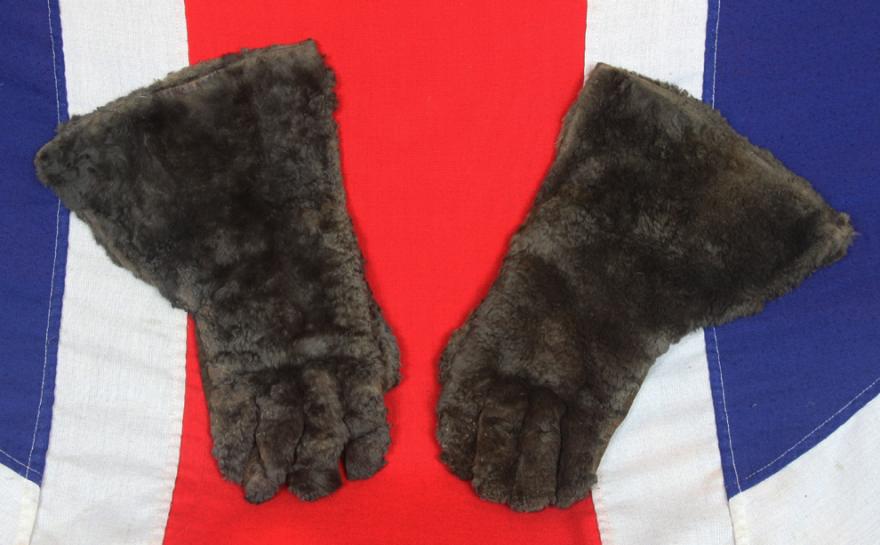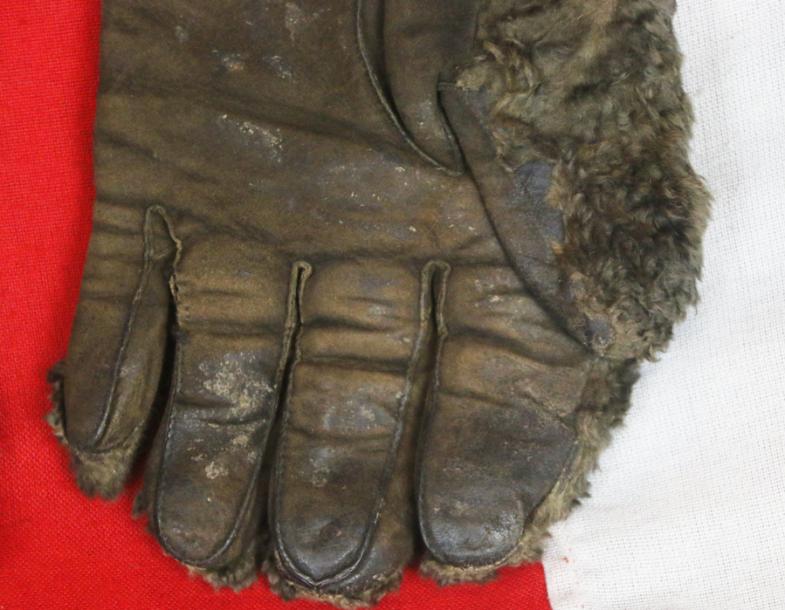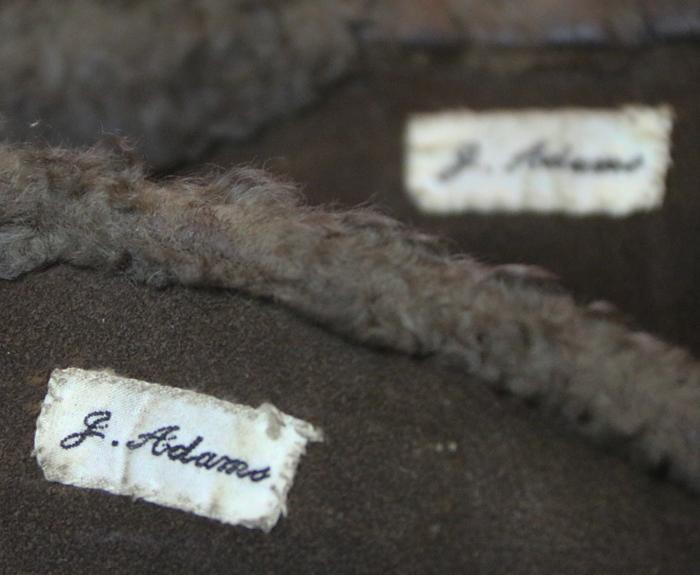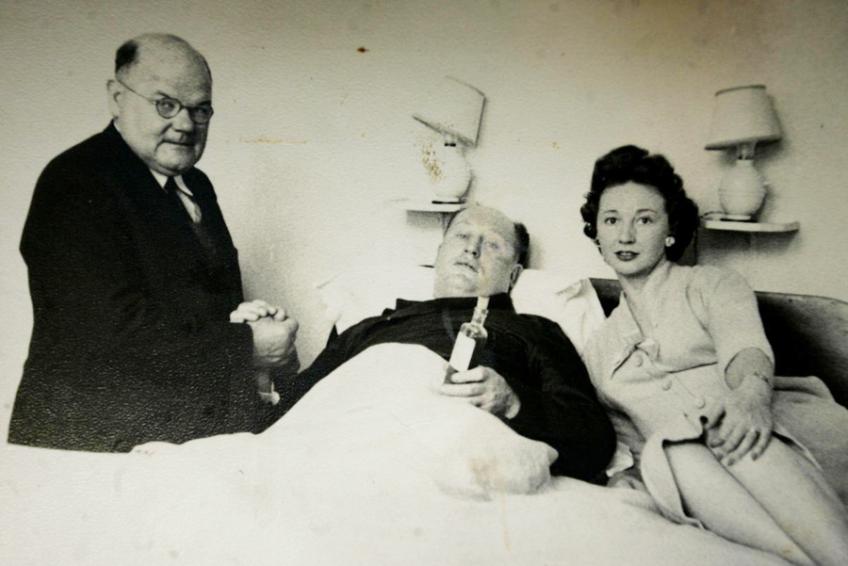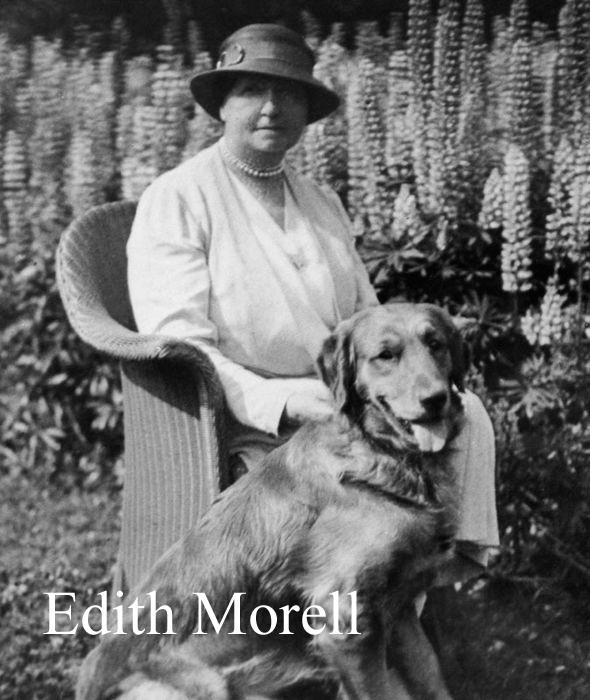Extraordinary Original 'Black Museum' Exhibit, Sheepskin Driving Gloves of The Most Notorious Dr Adams, The Original “Dr Death”,Who Incredibly Escaped Conviction in England's Greatest Murder Trial, Suspected of Murdering Up to 162 Patients
See Daily Mail Video on Dr Bodkin Adams
copy and paste}
https://www.dailymail.co.uk/news/article-14993923/john-bodkin-adams-doctor-163-patients-old-bailey-acquittal.html
https://www.dailymail.co.uk/video/video/video-3485217/Video-murder-got-Dr-Bodkin-Adams-indicted.html
Acquired from the estate of the most notorious Dr John Bodkin Adams A.K.A.: "Doctor Death"
The infamous, yet unproven, therefore England’s most successful serial killer poisoner - John Bodkin Adams (21 January 1899 – 4 July 1983).
Probably England's most prolific serial killer prior to Dr Shipman. His extraordinary acquittal at his murder trial was described as a travesty of justice, and highly suspicious due to suspected corruption and interference. The prosecution was subject to a demand for a professional inquiry.
He was a British general practitioner, convicted fraudster, and suspected serial killer. Between 1946 and 1956, 163 of his patients died while in comas, which was deemed to be worthy of investigation. In addition, 132 out of 310 patients had left Adams money or items in their wills.
It is now believed he killed more that 250 patients, even more than Dr Shipman
He was thus believed to be Britain's richest doctor.
Adams' first trial was received worldwide press coverage and was described as "one of the greatest murder trials of all time" and "murder trial of the century".The trial also had several important legal ramifications. It established the doctrine of double effect, whereby a doctor giving treatment with the aim of relieving pain may lawfully, as an unintentional result, shorten life. Secondly, because of the publicity surrounding Adams' committal hearing, the law was changed to allow defendants to ask for such hearings to be held in private. Finally, although a defendant had not been required within recorded legal history to give evidence in his own defence, the judge underlined in his summing-up that no prejudice should be attached by the jury to Adams not doing so. Scotland Yard's files on the case were initially closed to the public for 75 years.
The circumstantial evidence against him was extraordinary, but most was not brought into evidence. For example, on just one occasion he booked an appointment for a pathologist to perform an autopsy on his patient who was not even dead.
The first two of his highly suspicious and suspected murders were wealthy Eastbourne residents, Gertrude Hullet.and Edith Morell
Edith Alice Morrell was a patient of Dr Adams who had been partially paralysed after suffering a stroke. Adams supplied her with a cocktail of heroin and morphine to ease her discomfort, insomnia and symptoms of ‘cerebral irritation’ that was a condition of her illness.
However, three months before Morrell’s death on November 13th, 1949, she added a clause to her will stating that Adams was to receive nothing. Despite this clause Dr Adams, who maintained that Morrell had died from natural causes, still received a small amount of money, cutlery and a Rolls Royce.
The second alleged victim of Dr Adams did not occur until seven years after Mrs Morrell had died. Gertrude Hullett was another patient of Dr Adams who fell ill and then into unconsciousness. Despite not even being dead, Dr Adams called a local pathologist, Francis Camps, to make an appointment for an autopsy. When Camps realised that Hullett was still alive he accused Adams of ‘extreme incompetence’.
On July 23rd, 1956, Gertrude Hullett died and Adams recorded the cause of death as having been the result of a brain haemorrhage. An official investigation however, arrived at the conclusion that she had committed suicide. Camps argued that she had been poisoned with sleeping pills. Like Mrs Morrell before her, Hullett left several valuable items to Dr Adams including a Rolls Royce.
After years of rumours and Adams having been mentioned in at least 132 wills of his patients, on 23 July 1956 Eastbourne police received an anonymous call about a death. It was from Leslie Henson, the music hall performer, whose friend Gertrude Hullett had died unexpectedly while being treated by Adams.
The investigation
The investigation was taken over from Eastbourne police by 2 officers from the Metropolitan Police's Murder Squad. The senior officer, Detective Superintendent Herbert Hannam of Scotland Yard on 17 August was known for having solved the infamous Teddington Towpath Murders in 1953. He was assisted by a junior officer, Detective Sergeant Charles Hewett. The investigation focused on cases from 1946-1956 only. Of the 310 death certificates examined by Home Office pathologist Francis Camps, 163 were deemed to be suspicious. Many were given "special injections" - of substances Adams refused to describe to the nurses caring for his patients. Furthermore, it emerged that his habit was to ask the nurses to leave the room before injections were given.
On another, he told a nurse ‘it will only be a matter of minutes before she dies’, even though his patient had only been complaining of stomach ache before he injected her.
Another nurse remembered going into an elderly patient’s bedroom to find her freezing to death by an open window in February with her nightgown pulled up, while Dr Adams sat reading a book.
‘I am quite confident Adams is a mass-murderer,’ said the detective in charge of the investigation.
‘He has certainly killed 14 people.’
Code: 23901
1900.00 GBP

